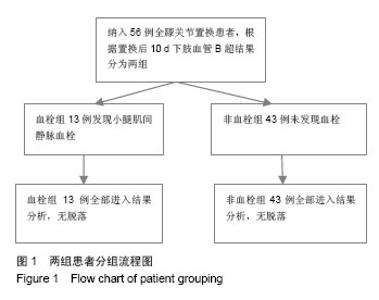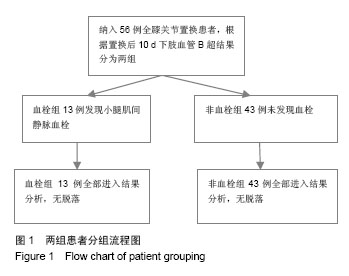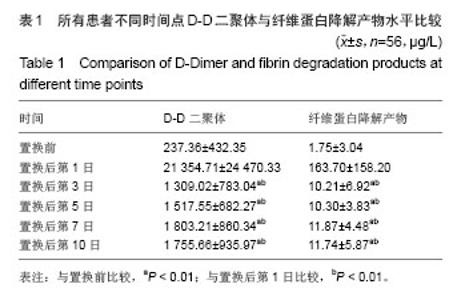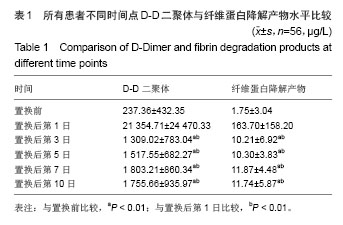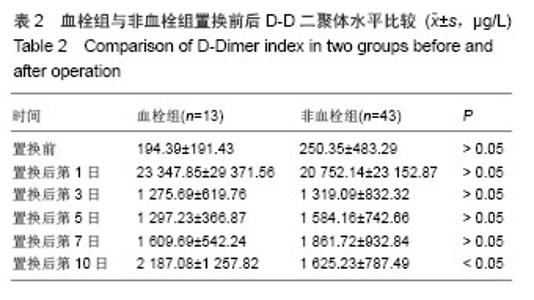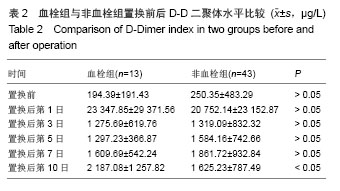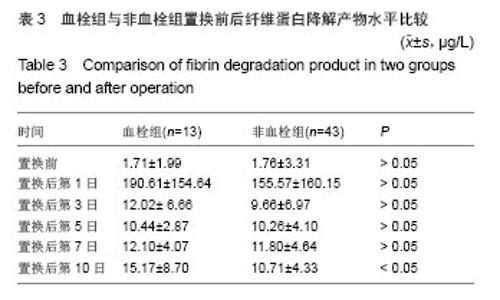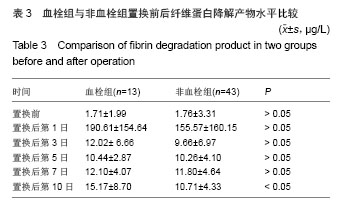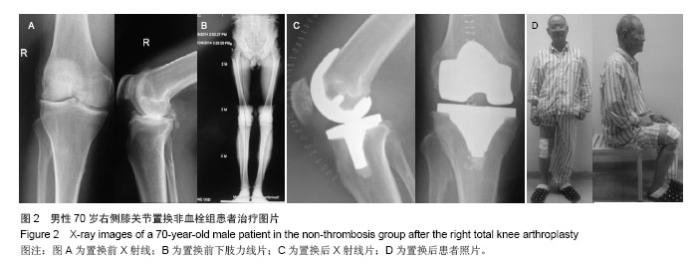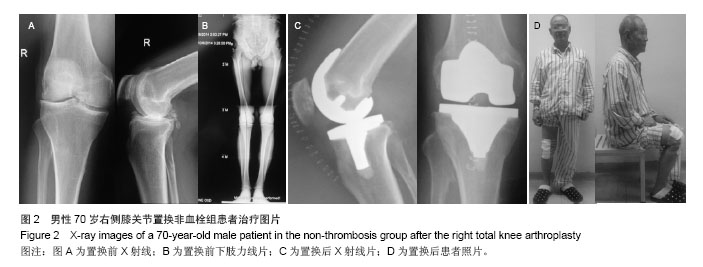| [1]Kanchanabat B,Stapanavatr W,Meknavin S,et al.Systematic review and meta-analysis on the rate of postoperative venous thromboembolism in orthopaedic surgery in Asian patients without thromboprophylaxis.Br J Surg. 2011;98(10): 1356-1364.
[2]Lieberman JR,Geerts WH.Prevention of venous thromboembolism after total hip and knee arthroplasty. J Bone Joint Surg(Am). 1994;76:1239-1250.
[3]邱贵兴,戴尅戎,杨庆铭,等.预防骨科大手术后深静脉血栓形成的专家建议-深静脉血栓形成预防座谈会纪要[J].中华骨科杂志, 2005,25(10):636-640.
[4]中华医学会骨科学分会.中国骨科大手术静脉血栓栓塞症预防指南[J].中华骨科杂志,2009,29(6):602-604.
[5]Ahir S P, Blunn G W, Haider H,et al.Evaluation of a testing method for the fatigue performance of total knee tibial trays. J Biomech. 1999;32:1049-1057.
[6]Tomaso V,Francesco M,Dario G,et al.Contact stresses and fatigue life in a knee prosthesis:comparison between in vitro measurements and computational simulations. J Biomech. 2004;37:45-53.
[7]赵艳,王禹.人工膝关节的生物摩擦学特点[J].中国组织工程研究与临床康复,2010,14(22):4090-4092.
[8]童培健.人工关节材料的生物相容性及其改进[J].中国组织工程研究与临床康复,2009,13(13):2401.
[9]朱金国.人工关节材料的研究进展与骨科临床应用[J].中国组织工程研究与临床康复,2008,12(19):3697-3700.
[10]Schat KR,Evans R,Newman JH.How much blood is really lost in total knee arthroplasty?correct blood loss management should take hidden loss into account. Knee. 2000;7(3): 151-155.
[11]李想,董纪元,陈继营,等.人工全膝关节置换术中止血带应用方法的效果比较[J].军医进修学院学报,2011,32(6):609-610.
[12]曹学伟,杨伟毅,梁比记,等.不同止血带使用方法对TKA围手术期失血量影响的临床研究[J].中国骨与关节外科,2011,4(6): 456-459.
[13]Stucinskas J,Tarasevicius S,Cebatorius A,et al.Conventional drainage versus four hour clamping drainage after total knee arthroplasty in severe osteoarthritis:a prospective, randomized, trial. Int Orthop. 2009;33(5):1275-1278.
[14]Shen PC,Jou I,Lin YT,et al.Comparison between 4-hour clamping drainage and nonclamping drainage after total knee arthroplasty.J arthroplasty. 2005;20(7):909-913.
[15]Tai TW,Yang CY,Jou JM,et al.Temporary drainage clamping after total knee arthroplasty: a meta-analysis of randomized controlled trials. J Arthroplasty. 2010;25(8):1240-1245.
[16]Huang ZY,Ma J,Pei F,et al.Meta-analysis of temporary versus no clamping in TKA.Orthopedics. 2013;36(7):543-550.
[17]徐昭宁,杨旭,田少奇,等.滑膜切除对全膝关节置换术术后失血及功能恢复的影响[J].中华临床医师杂志(电子版),2013,7(4): 1553-1556.
[18]Seo JG,Moon YW,Park SH,et al.The comparative efficacies of intra-articular and IV tranexamic acid for reducing blood loss during total knee arthroplasty. Knee Surg Sports Traumatol Arthrosc. 2013;8:1869-1874.
[19]Irwin A,Khan SK,Jameson SS,et al.Oral versus intravenous tranexamic acid in enhanced-recovery primary total hip and knee replacement:results of 3000 procedures. Bone Joint J. 2013;11:1556-1561.
[20]Abdel-Salam A,Eyres KS.Effects of tourniquet during total knee arthroplasty.A prospective randomized study. J Bone Joint Surg(Br).1995;77(2):250-253.
[21]Tetro AM,Rudan JF.The effects of a pneumatic tourniquet on blood loss in total knee arthroplasty. Can J Surg. 2001;44(1): 33-38.
[22]Tai TW,Chang CW,Lai KA,et al.Effects of tourniquet use on blood loss and soft-tissue damage in total knee arthroplasty:a randomized controlled trial. J Bone Joint Surg(Am). 2012; 94(24):2209-2215.
[23]Olivecrona C,Ponzer S,Hamberg P,et al.Lower tourniquet cuff pressure reduces postoperative wound complications after total knee arthroplasty:a randomized controlled study of 164 patients. J Bone Joint Surg(Am). 2012;94(24): 2216-2221.
[24]Mittal R,Ko V,Adie S,et al.Tourniquet application only during cement fixation in total knee arthroplasty : a double-blind , randomized controlled trial. ANZ J Surg, 2012;82(6):428-433.
[25]刘秀娥,杨林花,王宏伟,等.急性白血病患者弥散性血管内凝血的实验室检测及意义[J].血栓与止血学,2002,8(2):60-62.
[26]Kruskal JB,Commerflord PJ,Frank JJ,et al.Fibrin and fibrino-gen-related antigen in Patients with stable and unstable coronary artery disease. N EngI Med. 1987;317: 1361-1365.
[27]熊立凡,王鸿利.D一二聚体与静脉血栓症诊断-循证实验诊断学举例[J].诊断学理论与实践,2005,4(1):75-79.
[28]Papalambros E,Sigala F,Travlou A,et al.P-selectin and antibodies against heparin-Platelet Tactor 4 in patients with venous or arterial deseases after a 7-day heparin treatment. Am Coll Srug. 2004;199(1):69.
[29]中华医学会呼吸病学分会.肺血栓栓塞症的诊断与治疗指南[J].中华结核和呼吸杂志,2001,24(5):259-264.
[30]Kenneth OC. Richard Mreen.The anatomy of deep venous thrombosisof the lower extremity. J Vasc Surg. 2000;31(5):895. |
